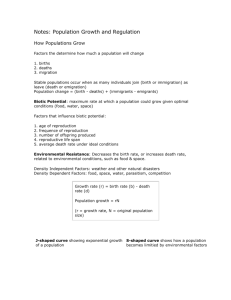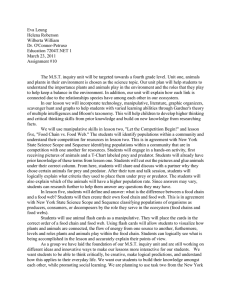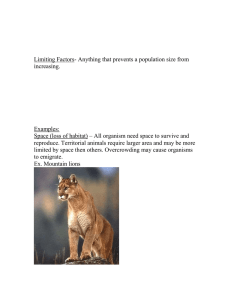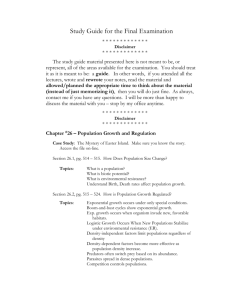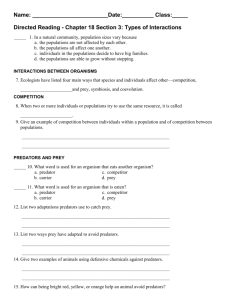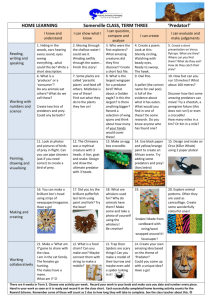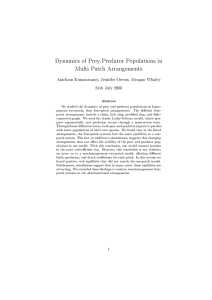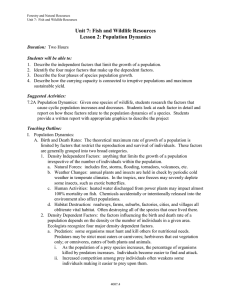Density Dependent & Independent Limiting Factors
advertisement
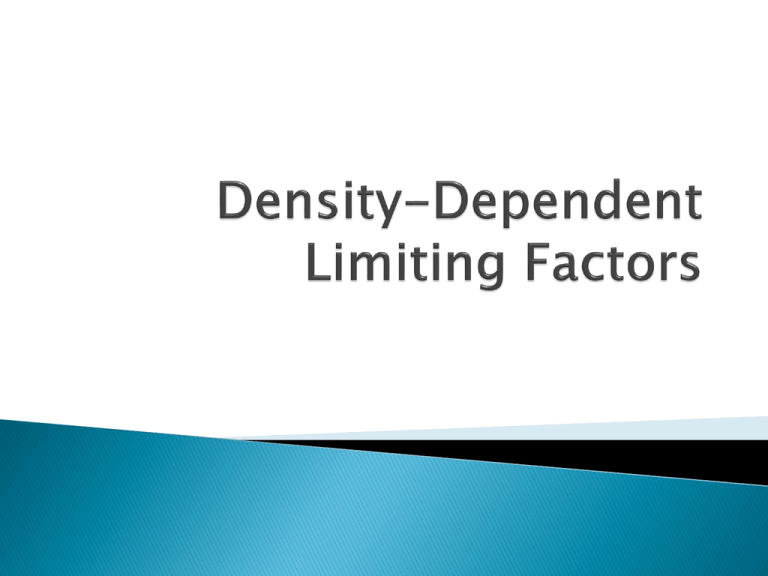
Get yourself into 6 groups of 4-5 students per group Once you find your group, sit at a table You have 30 seconds Food Station ◦ You will have one piece of “food” to share equally between you and your group members ◦ 3 stations to go to A,B,C-Rotate through them all ◦ Make notes on your worksheet Shelter Station ◦ ◦ ◦ ◦ ◦ ◦ On the ground you will see 3 “shelters” You must stay in the “shelter” for 3 minutes If you are loud, you’re out NO SHOVING! You will be out if you shove anyone Rotate through all 3 stations Make notes on your worksheet Crowded populations mean the individuals have to compete for food, water, space, sunlight, or anything else necessary for survival and reproduction Some may have enough to survive, but can’t raise offspring Some may die of starvation The more individuals in an area, the faster resources are used up Could be between individuals of the same or different species Predator-prey relationships tend to fluctuate (go up and down) If there is a lot of prey, the predator can eat more, increasing the number of predators If the prey decreases too much in population, there won’t be enough food for predators and so the population of predators decreases Plant and herbivore populations fluctuate just like the predator and prey populations Parasites and disease causing organisms feed at the expense of the host This can weaken or kill the host The larger the population the easier it is for the parasite or disease to travel through hosts Some species will fight amongst each other if they are overcrowded This fighting can cause stress leaving individuals susceptible to disease In a few species, overcrowding can cause females to neglect or kill their own offspring Organize the following words into 3 categories ◦ Density Dependent ◦ Density Independent ◦ I’m not sure A hurricane Famine A disease kills half of the population A forest is cleared by a logging company The plants that one species really likes has only grown half as much as usual An early frost kills cherry trees There is an unusually large population of wolves that eat a lot of rabbits Territorial lions start fighting each other for habitat space The weather has been unusually dry so the watering hole has dried up A factor that affects all populations in similar ways, no matter the population size or density It includes things like: Hurricanes Droughts Floods Natural Disasters So what would happen after a drought? ◦ No water so species will compete for the water WAIT A SECOND MS. JOHNSON! YOU’VE TRICKED US! Sometimes a density dependent factor can lead to a density independent limiting factor like competition What do you think?? We said that something happens to stop populations from growing. How do density-independent and dependent factors play into this? These limiting factors contribute to what is called carrying capacity Defined as: the maximum number of individuals of a species an environment can support On a sheet of paper, write a paragraph explaining whether or not you think that density independent factors should be considered separate from density dependent factors. Explain your answer using information from today.

